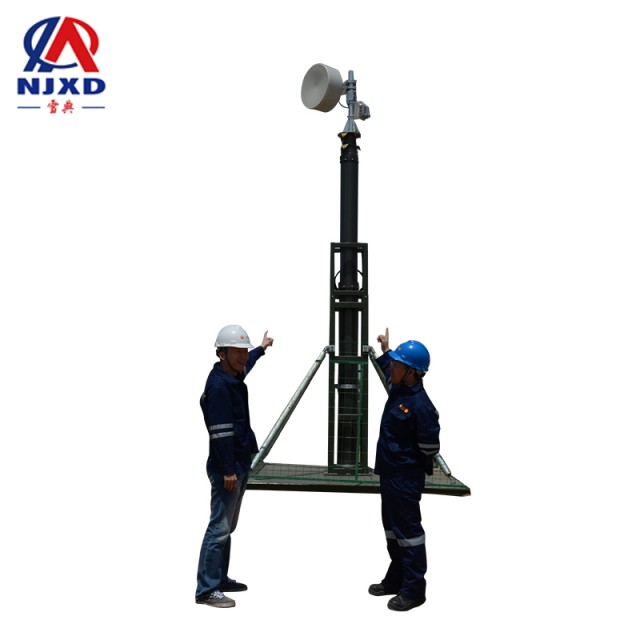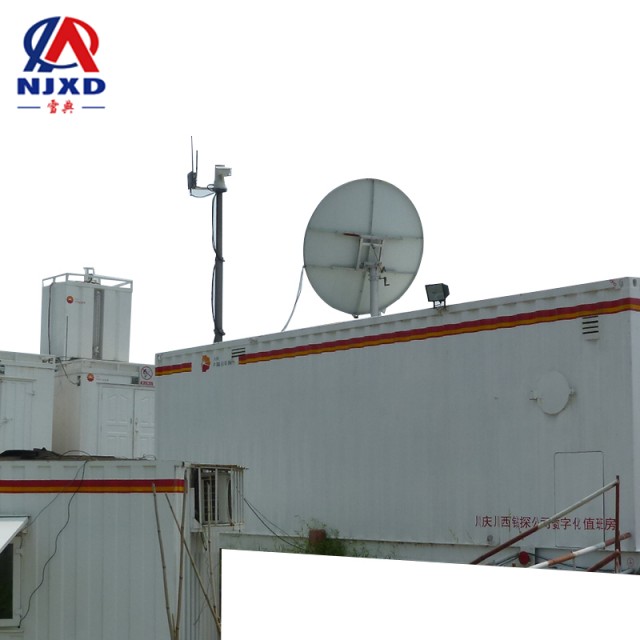NEWS
System structure of microwave communication of lifting antenna
Time:2021-07-20 View:

Band Division
Microwave can be divided into decimetre wave, centimeter wave, millimeter wave and submillimeter wave according to different wavelength, corresponding to ultra-high frequency UHF(0.3~3GHz), ultra-high frequency SHF(3~30GHz), extremely High Frequency EHF(30~300GHz) and high frequency THF(300GHz ~ 3THz).
Some frequency bands in microwave are often represented by codes.
The following L band is suitable for mobile communication. S-Ku band is suitable for communication based on the Earth's surface, including ground microwave relay communication and satellite communication between earth stations, of which C band is the most common, millimeter wave is suitable for space communtication and close ground communication. In order to meet the increasing demand of communication capacity, K and Ka bands have been adopted for communication between the Earth station and the space station. The 60GHz radio wave has a large attenuation in the atmosphere, which is suitable for close-range ground confidential communication. The radio wave of 94GHz has little attenuation in the atmosphere and is suitable for long-distance communication between the Earth station and the space station.

System composition
System equipment
The microwave communication system consists of transmitter, receiver, cable and antenna system, multiplexing equipment, and user terminal equipment, as shown in figure 2.
Among them, the transmitter consists of Modulator, up-converter and high-power amplifier. The receiver consists of low noise amplifier, down-converter and demodulator. The day feeder system consists of feeder, duplexer and antenna. User terminal equipment converts various information conversion into electrical signals. The multiplexing device forms the electrical signals of multiple users into a baseband signal sharing a transmission channel. In the transmitter, the modulator modulates the baseband signal to intermediate frequency and then converts it to radio frequency through upconversion, or directly modulates it to radio frequency.
In analog microwave communication systems, frequency modulation is commonly used. In digital microwave communication systems, polyphase digital phase modulation is commonly used, large-capacity digital microwave adopts modulation methods such as multi-band digital modulation and combined modulation that effectively utilize spectrum. The high power amplifier in the transmitter is used to raise the transmitted radio frequency signal to a sufficient level to meet the receiving field strength after channel transmission. The low noise amplifier in the receiver is used to improve the sensitivity of the receiver; The downconverter is used for the transformation between the intermediate frequency signal and the microwave signal to realize the high gain stable amplification of the fixed intermediate frequency; The function of the demodulator is to carry out the inverse transformation of modulation.
Microwave communication antennas are generally reflective surface antennas with strong directivity, high efficiency and high gain. Commonly used are parabolic antenna, Cassegrain antennas, etc. Waveguide or coaxial cables are mainly used in feeder. In ground relay and satellite communication systems, relay stations or satellite repeater are also required as relay forwarding devices.
Communication mode
Long-distance microwave communication on the ground usually adopts relay (relay) mode for the following reasons:
The microwave has short wavelength and line-of-sight propagation characteristics. However, the surface of the Earth is a curved surface, which will be blocked by the ground when electromagnetic waves are transmitted over a long distance. In order to extend the communication distance, it is necessary to set up several relay stations between the two places to transfer electromagnetic waves to microwave transmission with loss. With the signal attenuation of communication a increase of the distance, it is necessary to adopt relay mode to receive signals segment by segment, zoom in and send it to the next paragraph to extend the communication distance. Terminal Station: microwave station with only one transmission direction. Relay Station: It has two transmission directions. In order to solve the problem of microwave vision, additional microwave stations are needed. There are two types: active relay station and passive relay station. HUB station: a microwave station with three or more transmission directions and switching transmission channels in different directions, or called HUB station. Shunt station: a microwave station with two transmission directions, which is set up due to the needs of transmission services.

CATEGORY
NEWS
- Brief introduction of microwave communication technology lifting microwave antenna bracket
- System structure of microwave communication of lifting antenna
- Main Features and technical principles of microwave lifting communication
- Main types of antenna telescopic mast microwave communication
- Scattering communication of lifting antenna bracket